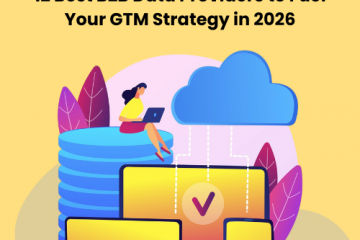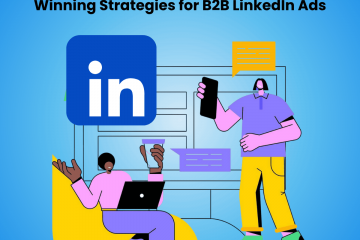Website Visitor Identification
For any digital business, a website is the most powerful tool for attracting and engaging potential customers. However, more than 90% of visitors drop off without converting. So, all the dollars you spent on customer acquisition – most of them vanished into thin air.
The challenge is even greater for B2B businesses, where buyers rarely convert on their first visit. For these businesses, the purchasing process is longer, involves multiple decision-makers, and requires repeated engagement.
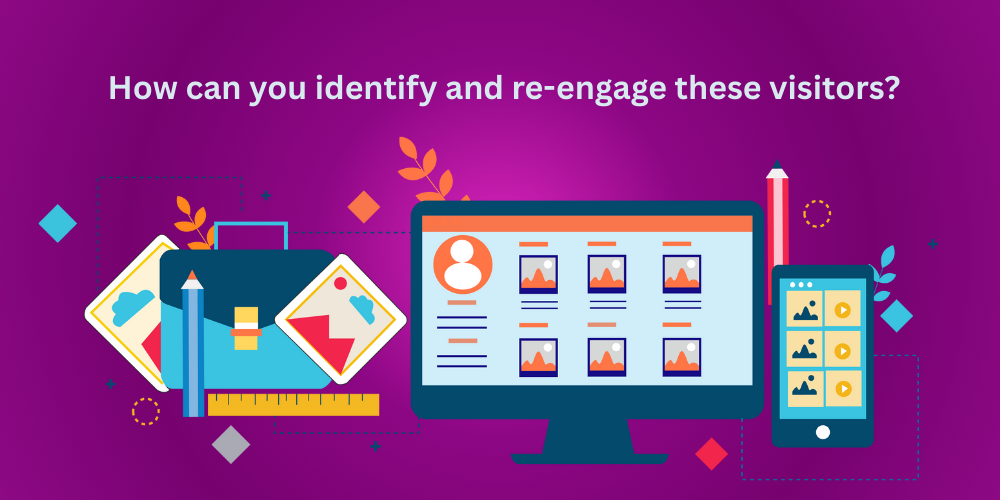
So, how can you identify and re-engage these visitors? Can you bring them back with relevant content and targeted follow-ups, or by assigning high-intent visitors to your sales team?
When every lead is potentially worth thousands of dollars in sales, getting qualified visitors in your pipeline becomes super important. If you don’t, your competitors will, and by the time you engage them, they may have already closed the deal.
Thankfully, because you deal with businesses and not individuals in B2B, there are ways for you to identify your visitors without breaking data regulations. In this article, we will discuss visitor identification strategies and help you implement them for your business. We will also examine certain tools on the market that claim to identify individual visitors, not just accounts, even when they remain anonymous.
What is Website Visitor Identification Software?
A website visitor identification software is a tool that identifies B2B visitors landing on your website. Behind the scenes, the tool relies on B2B databases, IP tracking, and other digital footprints to pinpoint accounts and decision-makers from a visiting company. In many cases, insights are also used to optimize the conversion funnel in real time to get more sign-ups.
Where other traditional tools would focus primarily on analytics, identification software helps you get more leads in the pipeline. Even an incremental increase from a 5% lead acquisition rate to 10% can cause a significant bump in revenue.
How Does Website Visitor Identification Work?
The technique used for visitor identification, while having some commonalities, varies from provider to provider. It could easily range anywhere from ethical and GDPR-compliant to totally sketchy and definitely illegal in many countries. We will get to that later, but let’s try to dissect the methods used for visitor identification.
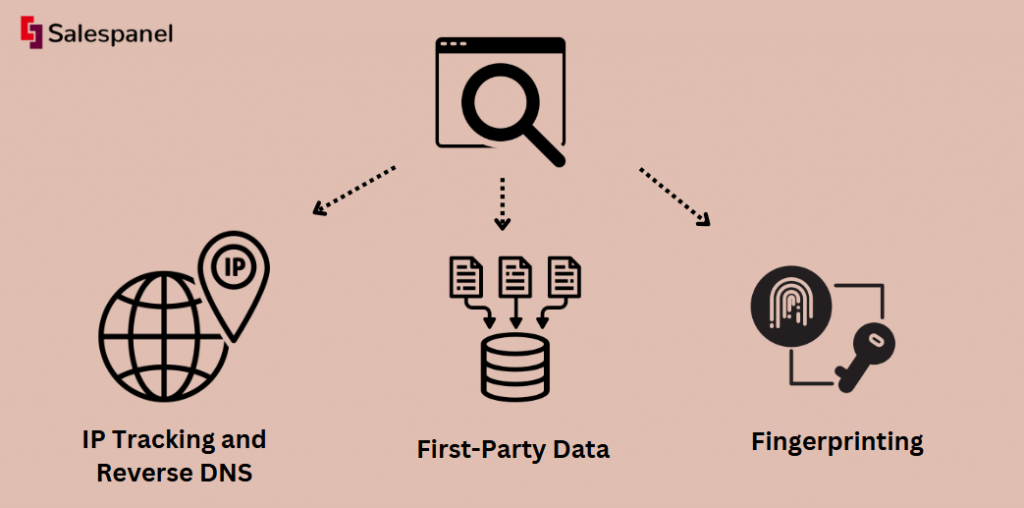
1. IP Tracking and Reverse DNS
The most widely used technique for visitor identification, IP deanonymization, is a strategy that uses reverse DNS tracking and IP tracking to identify which company the visitor works for.
When a visitor lands on your website, their device automatically shares its IP address with the server. Think of it as an e-handshake. The software then performs a reverse DNS lookup to determine the associated domain or company network. This data is cross-referenced with B2B databases to retrieve company details such as name, industry, location, and size.
In the early years of visitor identification, tools would rely solely on reverse DNS, as large enterprises would have a shared IP pool, which could help in deanonymizing them. However, SMBs would be much harder to detect with reverse DNS. Over the years, other techniques started to be used, and vendors have developed databases to address this limitation. This strategy is GDPR-friendly.
2. Fingerprinting
Each visitor creates a unique footprint when they access your site. This trail is tracked primarily using cookies. The data is collected by vendors and aggregated to create a digital identity for a visitor, providing some B2B-level information even when the user hasn’t signed up yet. The process uses data such as IP addresses, browser settings, plugins, and hardware details to create the footprint and is shared across websites using third-party cookies.
For example, if a person signs up on Website A, which is part of the vendor’s network, the vendor can later recognize the same person when they visit Website B. The vendor provides some form of data (like company information or even the person’s name and job role). This is an oversimplification, but you get the idea.
This practice is usually avoided in regions with stricter data laws like the EU. It is also avoided by many brands for ethical reasons.
3. First-Party Data
This type of data is collected by the website itself to identify a visitor. Tools like signup forms, UTM parameters, etc., can be used to identify visitors from a website. Raw data could also be enriched to get complete visitor information. An email address, for example, can be enriched with third-party tools to get the name, location, and company information of the visitor.
First-party cookies can also help you identify returning visitors, retarget them, and track them using session IDs. Other first-party tracking strategies, like session recordings and heatmaps, can also be used in parallel with visitor identification to track and analyze entire customer journeys
Key Benefits Of Anonymous Visitor Identification Software
Depending on how you do sales and marketing, visitor identification can help both teams.
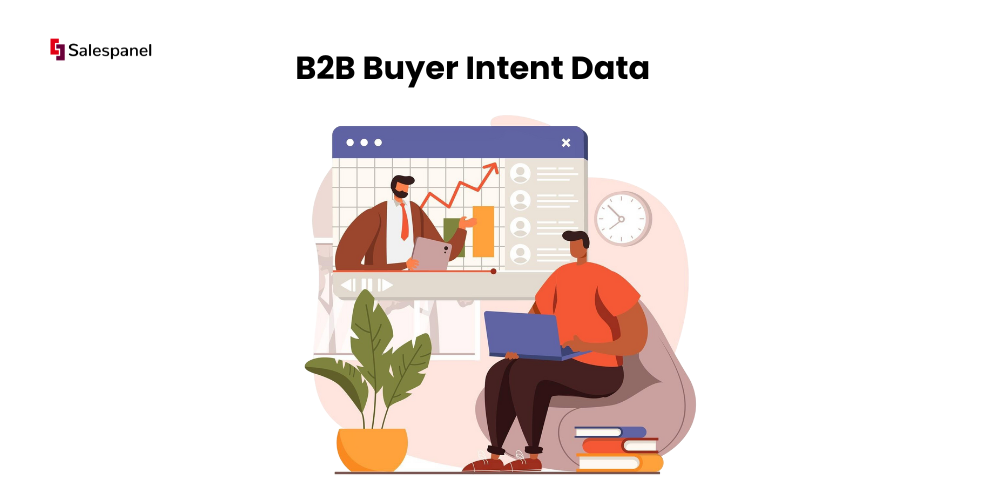
For marketing, B2B identification software can help:
- Optimize campaigns by analyzing if accounts visiting the website match with the target ICP and show intent.
- Understand which type of content brings qualified accounts to the website.
- Use the data to plan events, webinars, and other marketing activities.
- Retarget qualified visitors or create lookalike audiences of ICP-matching accounts.
For sales, it can help:
- Get a fresh list of accounts that can be targeted.
- Accelerate the sales pipeline by reaching first.
- Understand which accounts are showing buying intent and get information about decision-makers.
- Get notified when target accounts take important actions.
Identify Up To 67% Of Your Website Visitors
Before we go further into the article, here’s a formal introduction. Salespanel is a visitor identification and tracking software that can identify up to 67% of B2B accounts landing on your website. It also tracks these visitors throughout their journey, automatically fetching their contact information when they sign up, schedule a demo, or engage with your emails.
With a 360-degree tracking setup, Salespanel ensures you identify visitors as much as possible and from all fronts. Want to see it for yourself? Schedule a demo or sign up for a free trial now!
Is Visitor Identification Legal? Guide to Complying with GDPR
Remember we mentioned that visitor identification methods can range anywhere from completely ethical and legal to “Oh god, no!” territory? Well, let’s break down the different practices and discuss how you can be GDPR-compliant.
1. Use the right tools
While most visitor deanonymization tools identify companies instead of individuals, some tools promise to reveal individual leads for you. Not only is this approach not GDPR-compliant, but it also presents significant ethical challenges. It is mostly used by businesses that target regions with lax data regulations and is usually avoided by enterprises. We recommend avoiding this strategy if adhering to data laws and maintaining a positive brand reputation is important to you.
Instead, use products that rely on first-party data for visitor deanonymization. These products reveal only company details for unidentified visitors
2. Determine the nature of data collection
IP addresses and cookies come under the umbrella of personal data for GDPR. Even if the ID is a work email and you only store their business details, you must establish a legal framework to process this data.
If you are tracking data anonymously, a legal basis for compliance might not be necessary but for visitor identification, consent and transparency are both important.
3. Ensure transparency and consent acquisition
Ensure transparency and consent acquisition. Using consent forms and clear privacy policies, ensure your visitors understand how their data will be collected, used, and stored.
You should make it easy for your visitors to not only provide consent and read the documentation but also withdraw the consent if needed.
4. Minimize data collection and retention
Do not collect data you don’t need, and have a policy in place to delete data once its purpose is served. This will help you stay compliant and avoid legal troubles.
Regularly audit your data collection practices to ensure you’re only gathering information essential to your business operations.
5. Ensure your visitor identification and tracking tools are GDPR compliant
Read the documentation and ask directly whether your data processors, including visitor identification, tracking, and storage tools, comply with GDPR. Have Data Processing Agreements (DPAs) with vendors.
Your compliance efforts will fail if your data processors aren’t compliant themselves. This reinforces the importance of choosing the right tools and data providers.
These steps should help you process customer data ethically while complying with GDPR, CCPA, and the ePrivacy Directive. Once you have your legal basis established and consent mechanisms in place, you can start identifying visitors.
Top 5 Visitor Identification Tools for 2025
In this section, we will cover the various tools you can use to identify website visitors and understand what value propositions they bring to you.
Salespanel
Salespanel is an end-to-end website tracking solution that helps you with visitor identification, customer journey tracking, marketing analytics, and lead qualification. The product begins tracking customers right from their first visit and keeps tracking them throughout the entire buying cycle. With an identification rate of up to 67%, Salespanel can identify accounts that visit your website. And when leads from those accounts sign up through any medium, Salespanel captures the details for you, automatically. If you need complete visitor tracking, Salespanel is the tool to have.
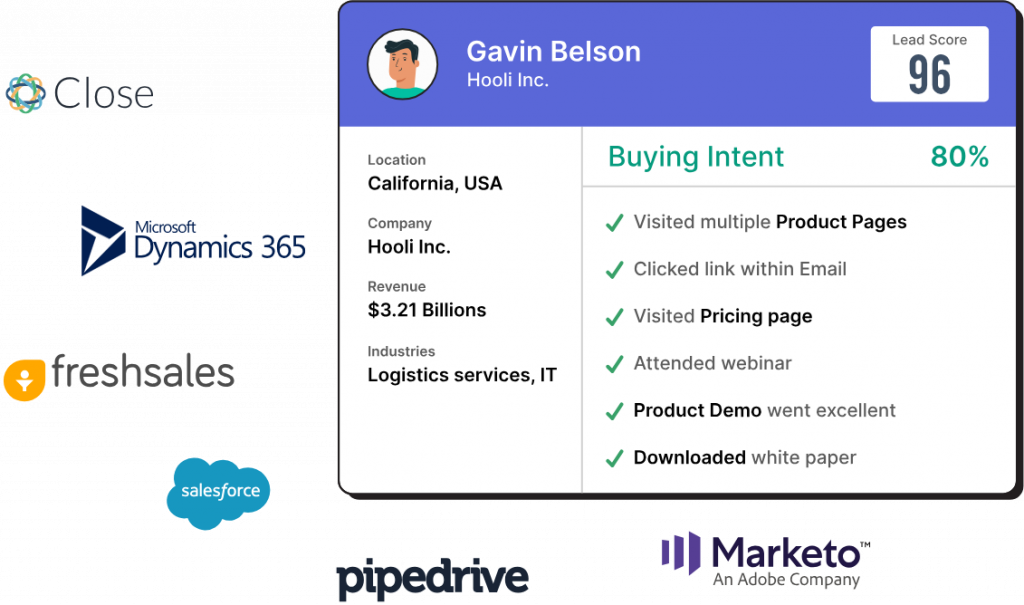
Pros:
- Industry-leading match rates for account deanonymization.
- End-to-end solution for all of your visitor tracking needs.
- GDPR-compliant tracking.
- Value for money subscription plans.
- Customers find support to be excellent.
- Combines proprietary data with third-party data from multiple vendors to give you high-quality matches.
- Offers lead scoring and predictive intelligence.
Cons:
- Pricing is unsuitable for brands with high volume but low-ticket sizes.
- Limited direct integrations.
Zoominfo
Zoominfo is a GTM platform that provides data and insights for sales intelligence and data orchestration. This product is primarily focused on data enrichment and has an extensive B2B database. Much like Salespanel, the product also identifies accounts from your website and gives you a list of decision-makers you can contact. Zoominfo is a good option if data enrichment is your primary requirement.
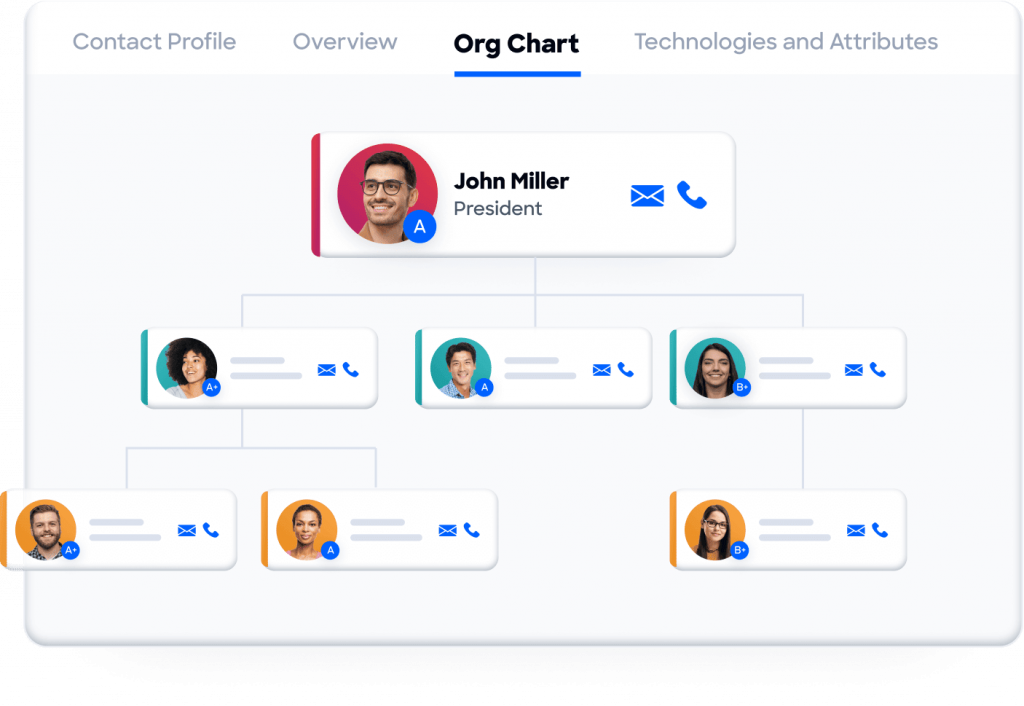
Pros:
- Has a database of 106M+ companies and is a great option for data enrichment.
- Has solutions for prospecting and sales intelligence.
- Offers predictive intelligence and buyer intent data.
- GDPR-compliant tracking.
Cons:
- Expensive pricing with a gated free trial.
- Many users have found company data to be incomplete.
Lead Forensics
Lead Forensics is harder to recommend in 2025 (we will get into the why part shortly) but, because it is a pioneer of this technology, it deserves a spot on the list. The company helps B2B businesses with account deanonymization and is the first to do so. However, considering how dated their product is, how heavily hard sales-driven their customer acquisition efforts are, and how the product is unnecessarily overpriced, it is a bit hard to recommend today.

Pros:
- Pioneer of account deanonymization.
- Has lead scoring which is unavailable in many competitors.
Cons:
- Expensive compared to competitors that use the same methodology to give you the same data.
- Strong contracts and lock-in periods for customers.
- Doesn’t have a unique value proposition in 2025.
RB2B
RB2B is a new player in the segment that has spiced up the market by identifying individual visitors. You read that right… Not accounts, individuals! Does that make it the go to option? Well, not really. You see, because of the ethical and legal challenges that come with pulling something off, the product is only available for US visitors and is not compliant with EU laws. Plus, Enterprises avoid using it as admitted by the founder himself. No big brand wants to creep their customers out and get into a PR disaster. The deanonymization rate is also at the lower end (around 10%, albeit with high accuracy). RB2B is a good option if you target only the USA, have no issues.
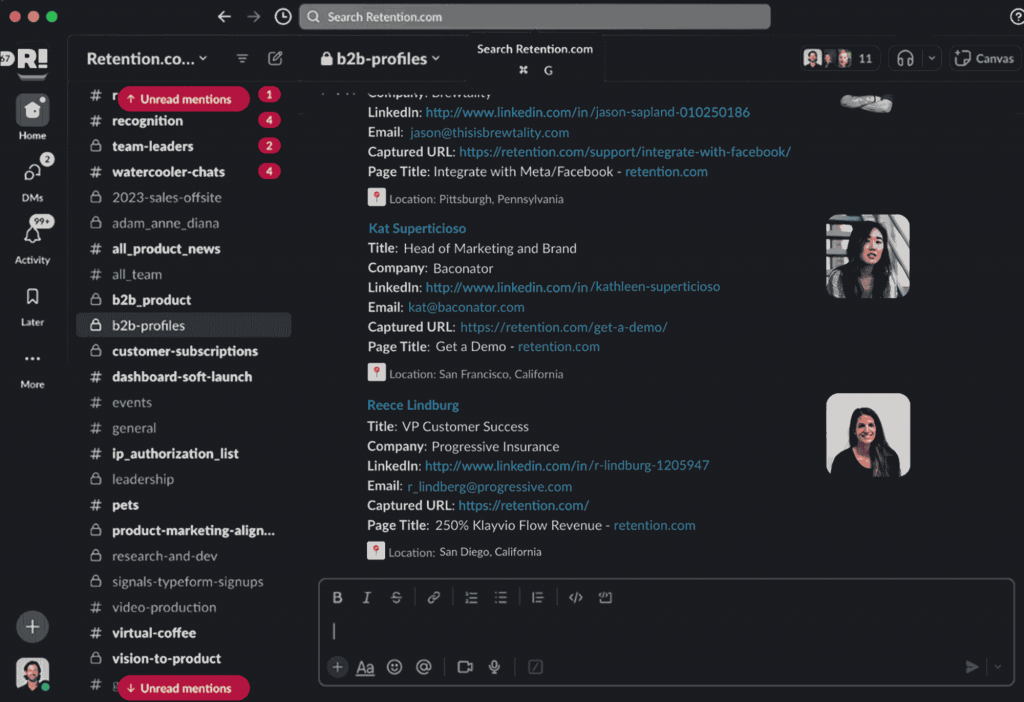
Pros:
- Identifies individuals with high accuracy.
- Has a strong database for the US market.
- Notifies in real-time about individual visitors.
Cons:
- Only available for US visitors.
- Has ethical and legal challenges which makes it unsuitable for EU markets.
- Only suitable for small businesses as Enterprises avoid the tool due to its nature.
Instantly
Instantly is primarily a cold outreach platform offering services like AI-powered email automation and access to lead databases. Similar to RB2B, this company also provides a visitor deanonymization feature that identifies individuals instead of accounts. And, much like RB2B, it only works in the USA. All the pros and cons of that product should also apply here. However, it does have multiple email outreach solutions to go with it. So, that’s a plus if email outreach is what you want to do. Most brands use visitor deanonymization for marketing purposes.
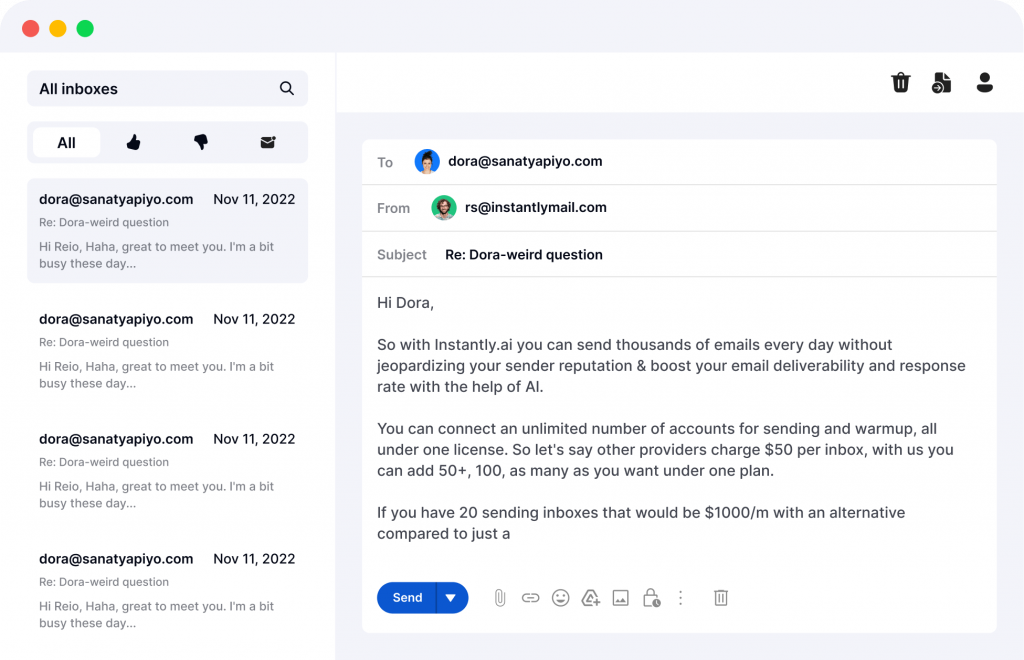
Pros:
- Identifies individuals with high accuracy.
- Has a strong database for the US market.
- Has multiple products for email outreach.
Cons:
- Only available for US visitors.
- Has ethical and legal challenges which makes it unusable for EU visitors.
- Not suitable for Enterprises for ethical reasons.
How Do You Pick The Right Software For Visitor Identification?
Before you pick a solution, you should ask yourself these questions:
- What do we intend to do with the data? Is it for marketing purposes or do we plan to use it for outreach?
- Does the product solve our primary use case?
- Do we want maximum regulatory compliance or are we willing to compromise in that area?
- Do we want more matches or accurate matches?
- What is our budget, and what level of commitment are we comfortable with? Some providers offer monthly subscriptions, while others require annual contracts.
Depending on your requirements, desired level of compliance, and target market, take trials of the products that suit your needs to determine the right fit for you. We recommend comparing the data from Salespanel with other products before making your decision.
Frequently Asked Questions (FAQs)
What is the best website visitor identification software?
Top visitor identification tools in 2025 are Salespanel, Zoominfo, Lead Forensics, RB2B, and Instantly.
Is website visitor identification ethical and GDPR-compliant?
Visitor identification is ethical and GDPR-compliant only when used to identify accounts and proper consent is obtained for data storage. It is generally compliant if individuals are identified only after they willingly share their information. We recommend using compliant tools, collecting minimal data, securing consent, and signing DPAs with vendors.
How does IP tracking work for visitor identification?
It uses reverse DNS lookups to map a visitor’s IP address to their company’s domain and cross-references it with B2B databases.
Should I use tools that promise to identify anonymous individuals?
These tools only work in the US, have low match rates, and are generally considered unethical and avoided by Enterprises. The risk-to-reward ratio might not be in your favour.
Sell more, understand your customers’ journey for free!
Sales and Marketing teams spend millions of dollars to bring visitors to your website. But do you track your customer’s journey? Do you know who buys and why?
Around 8% of your website traffic will sign up on your lead forms. What happens to the other 92% of your traffic? Can you identify your visiting accounts? Can you engage and retarget your qualified visitors even if they are not identified?
